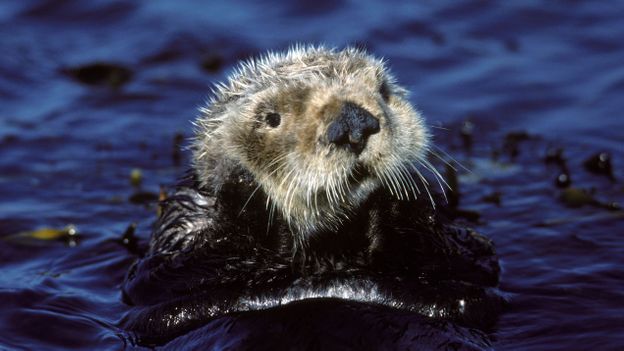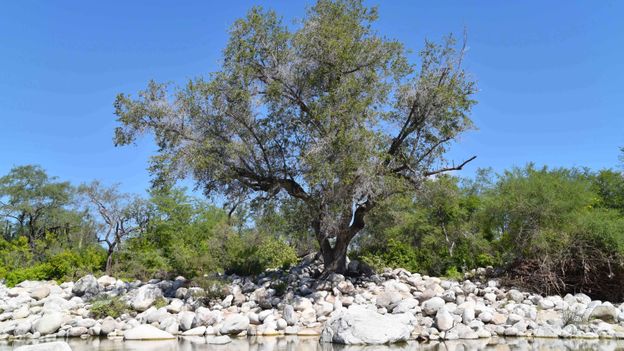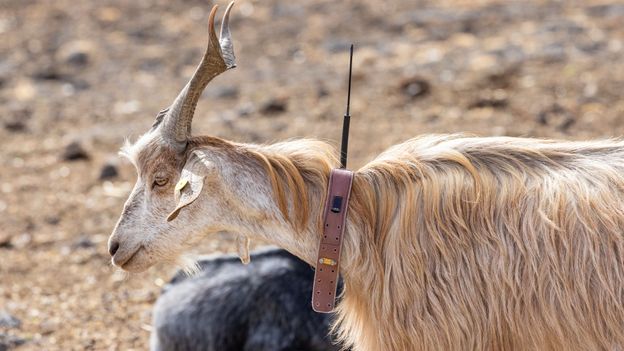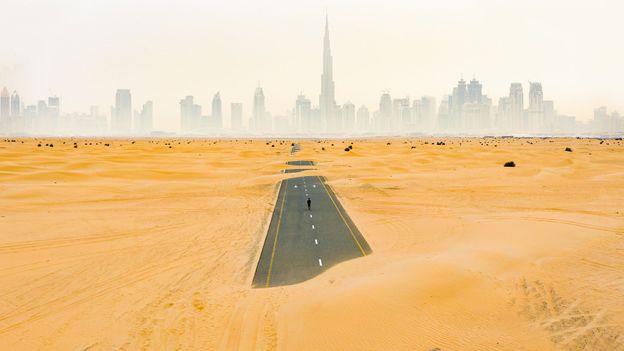Even before the sea otter effect was studied, kelp has been thought of as a possible climate solution. That’s because it can grow really fast – up to 60cm (24 inches) a day. That means it’s pulling carbon from the atmosphere faster than a slower growing plant (though kelp is technically an alga). When kelp dies and washes ashore, carbon returns to the atmosphere during decomposition. But when dead kelp sinks to the sea floor, it might not surface (and therefore decompose and produce carbon dioxide) for thousands of years. “A kelp frond that drifts to the seafloor and decomposes, that carbon might be trapped in the sediments for millennia, even millions of years,” says Pearson.
Carbon that is thus sequestered – prevented from entering the atmosphere for 100 or more years – can be key to addressing the climate crisis. But how much carbon from kelp is sequestered is still unknown. Part of the trouble is the gas-filled sacks along their stalks. When kelp dies, it tends to stay buoyant until those little floats break down. “When those kelps get dislodged they can travel and circulate on the surface for a 1,000km [620 miles],” says Hughes.
In addition to kelp forests, otters’ effect on seagrasses may also benefit the climate. Like kelp, seagrass absorbs carbon as it grows, and stores much of that carbon in its roots. And when older roots die, the carbon becomes locked in the sediments, where it can take hundreds of years or more to convert back to its gaseous form. “When I think about marine plants that can sequester carbon really well, it’s typically the rooted ones,” says Hughes. “So I’m talking sea grasses, marshes and mangroves – those are going to be the big three carbon sequestration habitats, in my opinion.”
Even at a lower estimate, sea otter carbon sequestration can add up. If only 1% of kelp between the Aleutians and Vancouver Island is stowed away in the deep sea, that’s still enough to offset the emissions of 100,000 combustion-powered automobiles. And if otters continue to rebound across their historic range, that would increase this carbon store – and all the ecosystem benefits of otters. “When we help restore missing keystone predators, we make things right in a lot of ways before we even recognise what some of those ways are,” Lilian Carswell, the southern sea otter recovery coordinator for the US Fish and Wildlife Service, wrote in an email to the BBC.
But reintroducing otters is not a win for everyone. Their massive appetites can diminish fishing opportunities for commercial operations and subsistence-based Indigenous communities.
Quantifying the effect of otters might help ease some of the impacts to fisheries. Based on the December 2012 price on the European Carbon Exchange ($47 [£36] per tonne of carbon), Estes’ paper that year estimated that sea otter presence in their North Pacific study area was worth up to $408m (£296m). Carbon prices have climbed since then, recently exceeding €60 (£51/$71) a tonne, which would bring that estimate even higher in today’s market. And a 2020 study found that the monetary benefit of sea otters – due their restoration of kelp habitat and associated increase in fish stocks, carbon sequestration, and ecotourism value – outweighs the losses to shellfish fisheries.
Perhaps win-win strategies for bringing back this keystone species exist. One idea researchers have floated is to use money from otter-generated carbon offsets to compensate fishers for losses in their catch. If the value of otter carbon banking is recognised by our human banks, maybe the mustelids will soon swim across more reefs and estuaries – fighting climate change while they’re at it.
—
This story was produced with additional reporting by Katarina Zimmer.
—
The emissions from travel it took to report this story were 0kg CO2. The digital emissions from this story are an estimated 1.2g to 3.6g CO2 per page view. Find out more about how we calculated this figure here.
—
Join one million Future fans by liking us on Facebook, or follow us on Twitter or Instagram.
If you liked this story, sign up for the weekly bbc.com features newsletter, called “The Essential List”. A handpicked selection of stories from BBC Future, Culture, Worklife, Travel and Reel delivered to your inbox every Friday.












